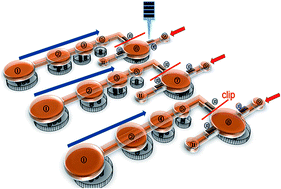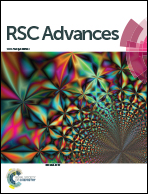A novel microfluidic device that integrates nucleic acid extraction, amplification, and detection to identify an EGFR mutation in lung cancer tissues†
Abstract
The ability to detect gene mutations is critical for the development of individual therapeutic strategies to improve lung cancer patient survival rate. We developed an easy-to-use, easy-to-take, low-cost, pump-free, loop-mediated isothermal amplification (LAMP)-based, glass powder-assisted point-of-care testing (POCT) microfluidic device that can extract DNA from samples in a minute and can detect gene mutations with high sensitivity and high specificity in 40 min. Incorporation of the fluorescent dye calcein allows the presence of the mutation to be detected by the naked eye. Using this device, we detected the L858R mutation in the epidermal growth factor receptor (EGFRL858R) in lung adenocarcinoma NCI-H1975 cells, but not in A549 cells that do not carry the mutation. Moreover, the EGFRL858R mutation was detected in five clinical tissue specimens from lung adenocarcinoma patients using this device.


 Please wait while we load your content...
Please wait while we load your content...